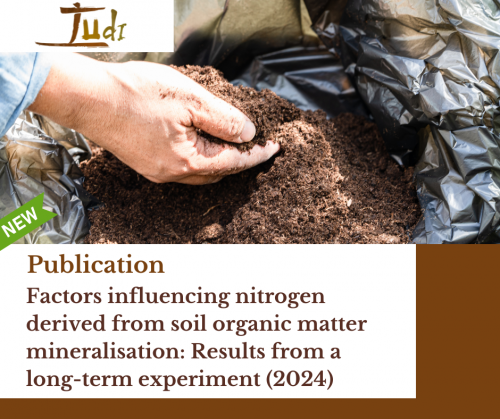TUdi article: Factors influencing nitrogen derived from soil organic matter mineralisation: Results from a long-term experiment
The TUdi article “Factors influencing nitrogen derived from soil organic matter mineralisation: Results from a long-term experiment”, written by Octavian P. Chiriac, Marco Pittarello, Barbara Moretti, and Laura Zavattaro was published in 2024 by ScienceDirect and is available in the TUdi library.
Mineralised nitrogen (N) from soil organic matter (SOM) is a crucial source of N for both natural ecosystems (forests, grasslands, etc.) and agroecosystems (farms and agricultural systems). To correctly manage N addition, an accurate estimation of the amount of N available to crops from SOM mineralisation is required. To accurately include N from SOM in a nitrogen budget (which tracks the movement and balance of nitrogen in a system), it is necessary to conduct a detailed, field-level evaluation of the key factors that influence the process of SOM mineralisation.
The article presents a study that aimed to measure and understand how weather conditions and soil characteristics influence N released from SOM in an agroecosystem. The N released from SOM was determined as the absorption of N by the unfertilised plot minus the N derived from atmospheric deposition and irrigation. 29 years of crop, agrometeorological (the study or application of meteorological factors in relation to agriculture) and soil data from three maize cropping systems were analysed in a long-term experiment conducted in NW Italy. A Linear Mixed Model (LMM) was developed for this study.
This study emphasises the role of weather conditions and soil organic carbon (SOC) content in influencing the amount of N released through soil mineralisation, which in turn supports plant nutrition. In a future climate scenario with more frequent droughts, nitrogen mineralisation may decline, leading to a greater reliance on fertilisers.
